Third chakra or Manipura: our Ego and self

An interiorized symbol of solar energy, the third chakra or Manipura is the seat of the Ego and our self. Through it we can affirm our individuality and exercise our free will to build our own life.
The 3rd chakra of the seven main chakras, is designated by the name of Manipura (from the Sanskrit “place of gems” or “brilliant gem”), it is also known as the solar plexus chakra or umbilical center.
Receive all our tips by email!
Love Astrology? Subscribe Now and Receive Exclusive Content!
Located between the solar plexus and the umbilical zone (under the ribcage), Manipura is identified with the will, the way to process emotions, the healing capacity and the interaction with other individuals and the environment.
The 3rd chakra represents the center of the ego, self-realization, social identification, personality, and the affirmation of feelings. Manipura is in charge of perceiving the energies emitted by other individuals, and predisposes us to action, according to them.
In the physical body, the 3rd chakra governs the abdominal cavity, stomach, pancreas, spleen, liver, bile, gallbladder, lower back, digestive system (except the rectum), and the system nervous.
The Third Chakra or Manipura
When the solar plexus chakra works correctly, it allows:
- the effective connection with other subjects and the environment;
- the creation of lasting bonds;
- acceptance and respect for oneself and third parties;
- the use of experiences and emotions with an evolutionary nature;
- and the correct handling of emotions, in situations of stress.
Too much energy in Manipura causes excessive importance to be given to the opinions of third parties, even above their own; need for exacerbated acceptance; little esteem for the self-respect or integrity of the other individuals.
A decrease in energy in the 3rd chakra causes:
- increase in selfish impulses;
- that one thinks of the exploitation of others to achieve satisfaction;
- the development of relationships based on interest;
- begin to privilege the social position over values;
- craving for control, dissatisfaction, depression, irritability, stagnant emotions, envy.
Locks in Manipura generate:
- repressed emotions;
- disorientation regarding its place in the Universe;
- decreased vitality;
- need to exercise dominion;
- disregard for health;
- personal force neutralized in times of conflict, exhaustion;
- feeling of emptiness and feeling of inferiority, greed, coldness, addiction to stimulants.
Third chakra: Reactivating Manipura
To purify and activate Manipura, one of the most recommended exercises is to receive and contemplate sunlight (not directly to the Sun), which is directly absorbed by this center of power and stimulates its functioning.
The vocalization of the RAM mantra, linked to the 3rd chakra, is another valuable technique, as well as visualizations with objects in shades ranging from light yellow to golden (Manipura colors).
With regard to the use of Crystal Therapy, stones such as topaz, tiger’s eye, amber, and citrine quartz can be used. Also, in the field of Aromatherapy, essential oils of lavender, cinnamon, rosemary and bergamot are used.
If it is decided to apply the essence on the location of the chakra, remember that in the case of women, Manipura turns to the left, and in the opposite direction (the right) for men.
As for other activities, yoga sessions or jogging are considered; look for a mechanism to express repressed emotions (without hurting or harming others), and break with routine habits.
How to unlock the energy of the third chakra
The 3rd chakra concentrates strength, optimism, and ambition. It is the light put on our thoughts, our words and our actions. It governs our ability to oppose a categorical refusal: our “yes” becomes a true yes and our “no”, firm and relevant, imposes respect.
Manipura is at the hinge between two planes of consciousness: the so-called inferior personality related to survival, food, procreation and egoic impulses and the superior personality that expresses itself in the radiance towards others. It is then the sun that warms and guides others by its light. It is at this moment that the triangle pointing downwards turns to point towards the chakra of the heart.
When our third chakra is slowed down, we consider that we are less important, less remarkable than the others. We erase ourselves, we accept the unacceptable, we always leave our place to another or do not fully occupy ours. We suffer from a lack of confidence, we are shy, timid, often embarrassed or we blush easily.
How to unlock the energy of the third chakra
An unbalanced solar chakra can be recharged and harmonized in different ways. Here are two methods to do so.
Activate the will, change the habits
Do different things. If you do not move, initiate your body to movement. Conversely, if you are hyperactive, stay still. To break repetitive patterns is to challenge yourself, and to overcome them will strengthen your self-confidence. Start a small step and what may seem like a small challenge for one will seem like a mountain for the other. Do things at your own rhythm, but get out of your comfort zone. You will discover magical aspects of life.
If the efforts are too intense and require too much energy, then visualize yourself succeeding without effort your challenges and the achievement of your goals. Also remember to reactivate your lower chakras.
Liberating exercise
- Stand upright with your feet firmly planted in the floor and your heels apart by about 50 cm. Raise your arms above your head, hands clasped.
- Bow your back slightly.
- When emitting the “Ah” sound, lower the upper part of your body, bringing your hands between your legs. The movement must be fast and continuous, and you must put as much force as possible. Repeat the exercise five to six times, feeling the energy in the upper part of your body.
The Chakras Explained
Get to know everything about all the 7 chakras bellow.

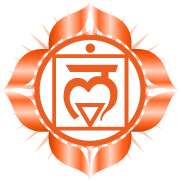
Muladhara
The First Chakra, which is the first of the seven main chakras, is designated by the name of Muladhara (from the Sanskrit mule “root” and adhara “support”). It is also known as radical chakra, root chakra, basal chakra or coxal center.
Read more
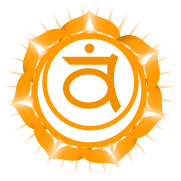
Swadhisthana
The Second Chakra of the seven main chakras is designated by the name of Swadhisthana (from the Sanskrit swa, “the proper” and adhisthana “abode”). It is also known as the sacred chakra or sacred center.
Read more
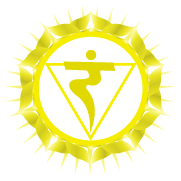
Manipura
An interiorized symbol of solar energy, the third chakra or Manipura is the seat of the Ego and our self. Through it we can affirm our individuality and exercise our free will to build our own life.
Read more

Anahata
The Fourth Chakra of the seven main chakras, is designated by the name of Anahata, which in Sanskrit refers to something that has not been touched, the sound produced by two elements that meet but do not collide. It is also known as heart chakra, cordial center, and unconditional love chakra.
Read more
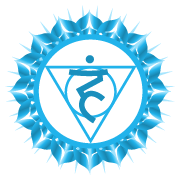
Vishuddha
The fifth chakra is also called throat chakra, or laryngeal chakra. Its Sanskrit name is Vishuddha, meaning “pure”. The problem of the 5th chakra is bound to express its truth in a fair way. This requires that chakras 1 to 4 be well balanced. Located in the throat, between the laryngeal (or nut) prominence and the larynx, Vishuddha represents the link between thoughts and emotions, the way of expressing and communicating.
Read more
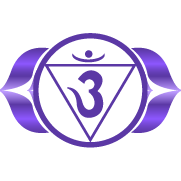
Ajna
The 6th chakra, Ajna, is also called the frontal chakra or 3rd eye. It is the chakra of the inner vision and the extrasensory perception. The 3rd eye allows psychics and therapists to see the aura, to go back into past lives, etc.
Read more
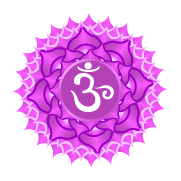
Sanskrit
The seventh chakra is also called Sahasrara, which in Sanskrit language means “multiplied by a thousand”, a clear reference to the lotus of a thousand petals symbol of Illumination. It is the chakra of knowledge, consciousness, intelligence and humility.
Read moreYou may also like:
- Aura cleansing ritual: why you should do it
- Healing gemstones: the most popular
- Forest bathing: why you should try it

